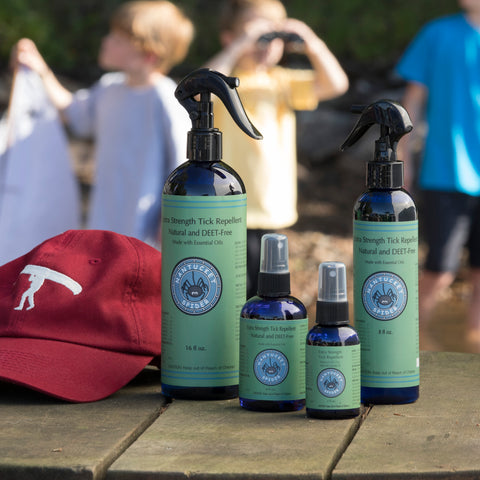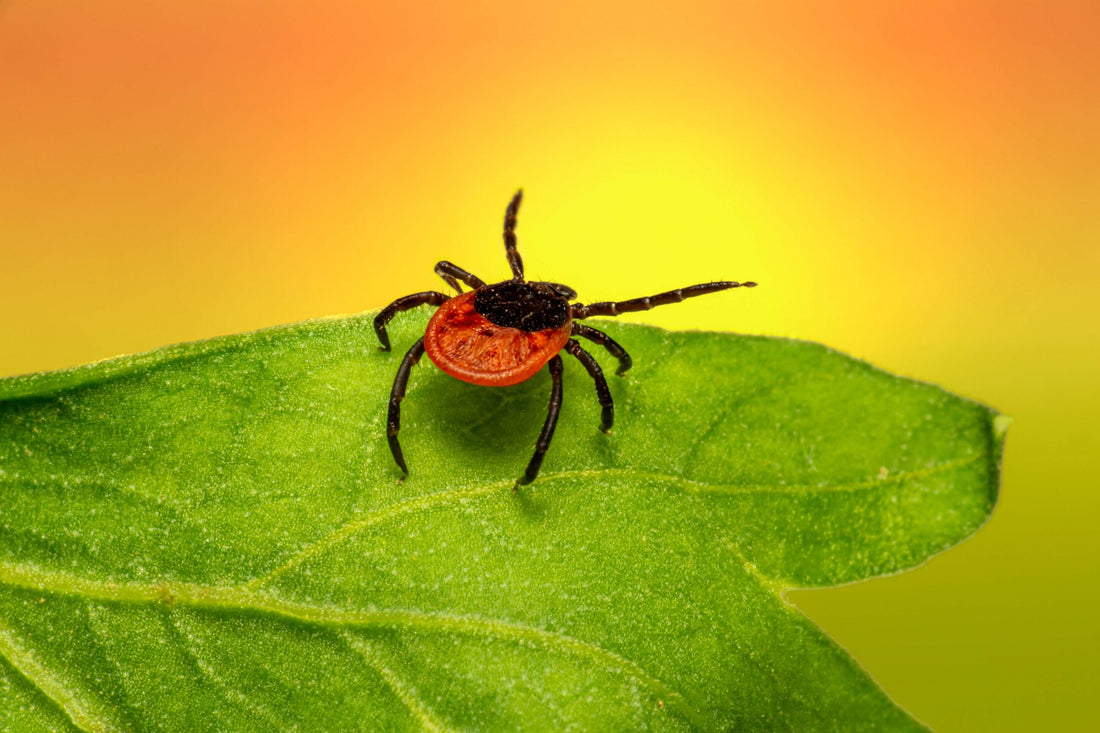Get The Facts About Ticks
Ticks can really be a menace, especially if you spend time outdoors—in tick country. And the term "You're ticking me off" was inspired by the annoying habits of ticks latching on to your soft, supple skin when you least expect it. They love the warm, humid climate, so look out for them this summer!
Ticks are external parasites that feed on the blood of mammals and birds, and given the opportunity, reptiles and amphibians will not escape them. They are arachnids, part of the mite superorder Parasitiformes. If you go hiking, on a picnic, or just drive out to the bush to take in some nature sights, ticks can find a way to go back home with you. That is why a tick repellent is essential when going on outdoor trips, especially when you live in a tick-prone location.
Tick-Borne Diseases and Their Effects

Apart from Lyme disease, which many people know that it's contracted from a tick bite, the Center for Disease Control and Prevention (CDC) names four other tick-borne diseases: Anaplasmosis, Babesiosis, Ehrlichiosis, and Rocky Mountain Spotted Fever.
One tick can lay anywhere between one thousand to eighteen hundred eggs! They can lay on the host—be it animal or human—and some will lay on the ground. Imagine so many tick eggs on you or your animal. Not cool. Laying happens in the summertime when they are full adults and the time is nice and warm.
A tick bite can make your life miserable. Symptoms and signs that you are a tick host are vomiting, rashes, skin ulcers, fever, and increased pulse rate. A tick bite that transmits a disease can also cause stomach aches, tiredness, sensitivity to light, and paralysis!
900 Species

Although ticks are diversified into 18 genera and about 900 different species, they are categorized into two major groups. The hard ticks—Ixodidae, which has a plate-like structure on its back called scutum--and the Argasidae--soft ticks that appear to have wrinkles. The adults have pear-shaped bodies, which become swollen with blood when they feed. Like spiders and scorpions, they are eight-legged creatures and are related.
Hard ticks have a beaklike structure at their mouthpart in their front, while soft ticks have their mouthparts on the underside of their bodies.
Tick Lifecycle

A tick lifecycle is divided into four stages--the egg, the larvae, the nymph, and the adult. The Ixodidae—hard tick undergoes up to three host lifestyles, while the Argasidae tick has up to seven nymphal stages—all requiring blood ingestion to survive. Due to their blood ingestion diet, ticks are dangerous vectors of serious diseases, affecting humans and animals alike. Ticks locate their prey by sensing their odor, moisture or body heat, and environmental vibrations.
Bearing in mind that approximately 900 species of ticks exist, their lifespan can be between a couple of months up to a year, depending on the species.
Ticks Habitat and Food

Ticks make themselves at home in wooded locations that are filled with bushes and grass and must find a warm body to be their host. So the more time we spend outside while we are tending to our gardens, camping with loved ones, or hunting with buddies, puts us in the direct line of fire for ticks. Get the bug spray for kids ready when the little ones are playing outside with neighborhood friends.
Although ticks will feed anywhere they find food, some ticks are dog lovers. In fact, the brown dog tick and the American dog tick would rather eat a meal from dogs than humans. Dogs are also easy victims of ticks in wooded areas and backyards where they are commonly found playing. This makes a dependable natural tick repellent for dogs mandatory.
Living in the bushes or brush-filled areas, the ticks can feed on mice, deer, foxes, birds, or any warm-blooded animals they find in their pathways.
When Ticks are Most Active
If you are wondering when ticks are most active, and out on the prowl, the short answer is during the summer and spring months. Hot, dry, and humid conditions pull ticks like a magnet, especially during the middle of the day. But don’t be surprised when ticks are out, looking for a host when the temperature is cooler, around dawn, dusk, and other seasons.
Ticks can also be active in cooler weather, so don’t let them fool you. Late fall is when adults are a threat, and early spring is the time of the year to be especially aware of ticks because they tend to be younger, smaller, and harder to detect. By summer they are full-blown adults with bigger appetites!
How Ticks Latch on to Humans

Ticks latch on to humans and can stay securely attached to your skin. They can stay there for many days just feeding and transmitting diseases. To make matters even worse, ticks generally demand 24-48 hours of eating before they can successfully transmit infections like Lyme disease. Having the best bug spray for kids and adults alike, an essential oil tick repellent is essential to prevent such illnesses.
When and Where Humans Are at Most Risk for Tick Bites
The areas of the body that seem most common for tick bites are the back of the neck, scalp, groin, and legs. These are the areas to keep covered and protected the most. Utilize essential oil insect spray and find the best natural tick repellent you can get your hands on to prevent tick bites.
Preventative Measures
It is always better to be safe than sorry when it comes to tick prevention. One preventative method is to use insect repellent on exposed areas of the skin. Ensure your body is protected by wearing full-sleeve shirts, pants, and a hat. Don't allow ticks to make their way into your home by getting an express ride via your articles of clothing. You can also treat your socks and pants legs with insecticide
After a day outside, put your clothing through a tumble dry for no less than 10 minutes with the heat set on high, or even longer if your clothes are wet.
If you are going to wash your clothes right along with the tick prevention process, be sure to wash them with hot water because cold water and mild temperatures will not fully get rid of ticks.
While you are in inspection mode, give your pets and outdoor gear a strong once-over because ticks can travel into your house on your pets and backpacks and then get attached to a family member later on.
Shower soon after being outdoors. Showering within two hours of coming indoors has been shown to reduce your risk of getting Lyme disease and may be effective in reducing the risk of other tick-borne diseases. Showering could help wash off unattached ticks, and it is a good opportunity to do a tick check.
Which parts of the body should you inspect with a mirror to ensure you and those around you are tick-free? Well, inspect around your waist, on the back of your knees, between your legs, under your arms, in and around your ears and hair, and yes, even inside your belly button. If you find ticks, remove them immediately with tweezers, or a tick-removing instrument. Use your fingers if you have nothing else. That tick must go!
Nantucket Spider

Nantucket Spider is your one-stop-shop for DEET -free bug spray, the best bug spray for kids, and the best natural insect repellent. Get your essential oil insect repellent that is safe for your children and strong enough for your pets too.
For sensitive skin easily irritated by traditional synthetic repellents, here is the viable option for your tick problem solution--Nantucket Spider naturally formulated tick repellent spray. Nantucket Spider provides the Extra Strength organic repellent that ticks hate and is gentle on your skin, with a luxurious aroma that you can’t help but love.
Nantucket Spider offers DEET-Free extra strength tick repellent that is considered the best natural tick spray for whenever you are in tick country. Click here to learn more about some of their top tick repellant products to take a walk in the woods.
Ticks are not only a nuisance - they can be dangerous. Be vigilant and avoid tick-borne diseases by keeping away from tick-prone areas, or arm yourself with the best tick repellent spray against the parasitic tick!


